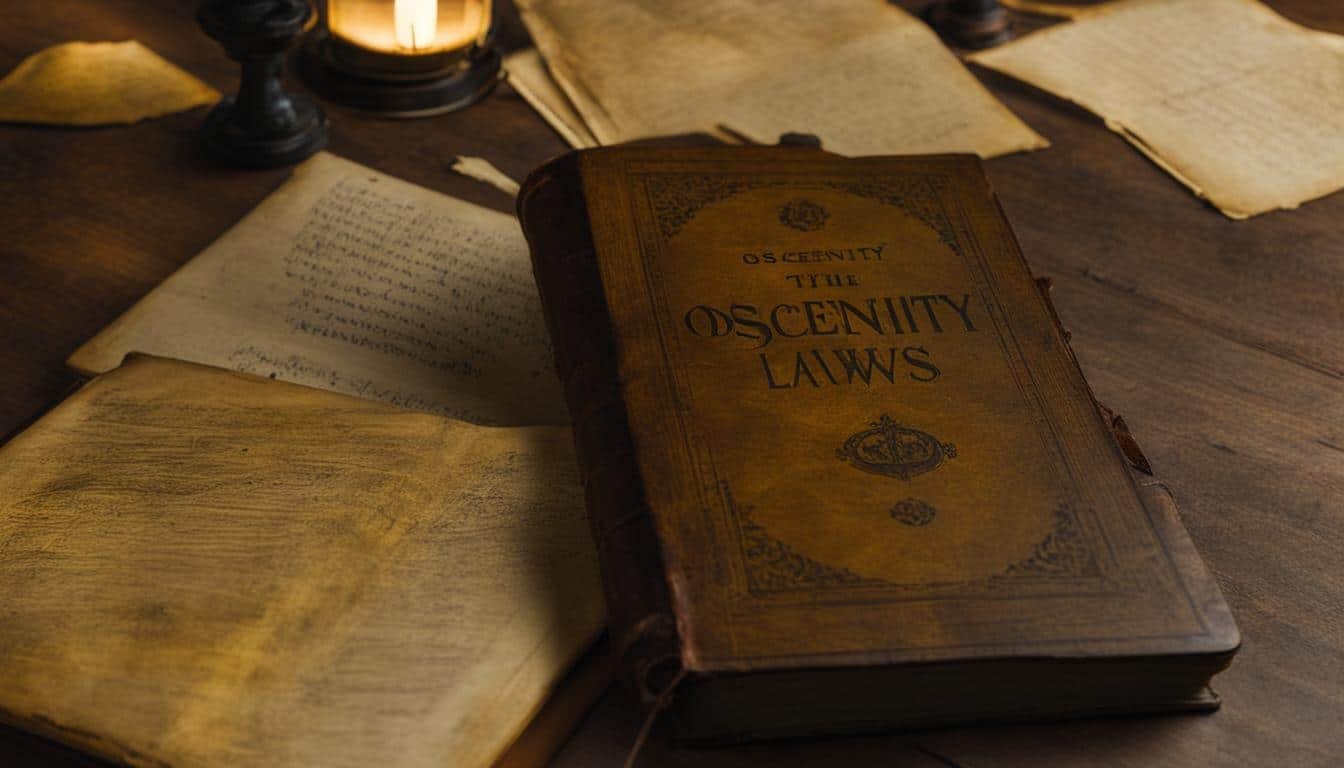The legal definition and regulation of obscenity have evolved over time in the United States. One landmark case that played a significant role in this evolution is Miller v. California, which was decided by the U.S. Supreme Court in 1973. The case established the “Miller test” for obscenity, which states that material lacking serious literary, artistic, political, or scientific value and appealing to prurient interests is not protected by the First Amendment. This test built upon the previous ruling in Roth v. United States, where it was stated that obscene material had no redeeming social importance. However, the earliest American obscenity laws did not emerge until the mid-19th century, with the enactment of the 1873 Comstock Act, which prohibited the mailing of material deemed obscene. In the early 20th century, the rise of new technology, such as films and the expanding press, led to more significant debates and concerns about obscenity. The famous novel Ulysses by James Joyce faced legal challenges and was not legally available in the U.S. until more than a decade after its publication due to obscenity laws. Overall, the history of obscenity laws in America demonstrates a changing understanding of what is considered obscene and how such material should be regulated.
Key Takeaways:
- The U.S. Supreme Court case Miller v. California established the “Miller test” for obscenity.
- Roth v. United States laid the groundwork for the Miller test by stating that obscene material had no redeeming social importance.
- The earliest American obscenity laws emerged in the mid-19th century with the enactment of the 1873 Comstock Act.
- New technology, such as films and the expanding press, led to more significant debates and concerns about obscenity in the early 20th century.
- The novel Ulysses by James Joyce faced legal challenges and was not legally available in the U.S. for more than a decade due to obscenity laws.
The Changing Standards of Obscenity
The legal standards for obscenity in the United States have undergone various changes throughout history. In the past, the standard definition of obscenity used by U.S. courts was based on the British Hicklin case. However, this definition evolved over time.
In 1934, the New York circuit court of appeals abandoned the Hicklin standard and introduced the idea of judging obscenity based on the libidinous effect of the material as a whole. This approach was further developed in the Roth v. United States case in 1957, where the U.S. Supreme Court established the contemporary community standards as the basis for determining obscenity.
Subsequent landmark cases like Miller v. California refined the definition by introducing a three-part test that considers the appeal to prurient interest, patently offensive depiction of sexual conduct defined by state law, and lack of serious value. These legal developments reflect the changing societal attitudes towards obscenity and the public’s growing permissiveness in matters related to sex.
“The legal standards for obscenity in the United States have evolved in response to societal changes and advancements in legal interpretation.”
While the focus of obscenity prosecutions has shifted towards child pornography in recent years, the legal definitions and standards continue to shape the regulation of obscenity in the United States.
Implications of the Changing Standards
The evolution of obscenity laws in the United States has had various implications. The shift towards a more subjective, community-based standard has allowed for greater flexibility in determining what material qualifies as obscene. This, in turn, has led to a more permissive environment for sexually explicit content that can be considered artistic, literary, educational, or socially valuable.
However, the changing standards have also raised concerns about the potential harm caused by obscene materials that may exploit or harm vulnerable individuals, particularly children. As a result, the focus of obscenity laws has increasingly turned towards regulating and prosecuting child pornography, reflecting a prioritization of protecting minors from exploitation.
Emerging Challenges and Future Perspectives
Advancements in technology, particularly the internet, have posed significant challenges to the regulation of obscenity. The ease of access to explicit material and the ability to distribute it globally have blurred traditional jurisdictional boundaries and made it more difficult to enforce obscenity laws effectively.
Furthermore, ongoing debates surrounding freedom of expression and the potential harm caused by obscene materials continue to shape the future of obscenity laws. Feminist movements, for instance, have raised concerns about the objectification and degradation of women in pornography, leading to discussions about the balance between protecting individuals’ rights and safeguarding society’s moral fabric.
As technology continues to advance and societal attitudes towards sexuality and obscenity evolve, the regulation of obscenity will undoubtedly face further challenges. Striking the right balance between freedom of expression, protection of individuals, and maintaining social order will remain a complex and ongoing task for lawmakers and courts.
Table: Evolution of Obscenity Definitions
| Historical Case | Obscenity Definition |
|---|---|
| Hicklin case (British standard) | Based on the effect of isolated passages on susceptible minds |
| Roth v. United States | Contemporary community standards determine obscenity |
| Miller v. California | Three-part test: appeal to prurient interest, patently offensive sexual conduct, and lack of serious value |
The Global Context and Future Trends of Obscenity Laws
Obscenity laws differ across countries, reflecting unique cultural perspectives and legal definitions. In Western nations, including the United States, there has been a general shift towards greater permissiveness and respect for individual privacy regarding sexually explicit material. This trend has been accelerated by the advent of the Internet, which has presented challenges in regulating the access to and distribution of pornography.
However, it is important to note that laws regarding the sexually explicit depiction of minors have become more stringent, particularly in English-speaking countries. There is a strong focus on safeguarding children from exploitation and ensuring their well-being. Feminist movements have also played a role in shaping obscenity laws in certain nations, raising concerns about the potential degradation of women and violation of human rights in pornography.
While there are regional variations, most countries seek to suppress obscene material through criminal law and various administrative or regulatory agencies. The future of obscenity regulation is likely to face ongoing challenges due to advancements in technology and the continued debates surrounding the balance between freedom of expression and protecting vulnerable individuals from harm.
Source Links
- https://time.com/4373765/history-obscenity-united-states-films-miller-ulysses-roth/
- https://scholarship.law.unc.edu/cgi/viewcontent.cgi?article=1267&context=falr
- https://www.britannica.com/topic/obscenity/Developments-in-the-20th-century






